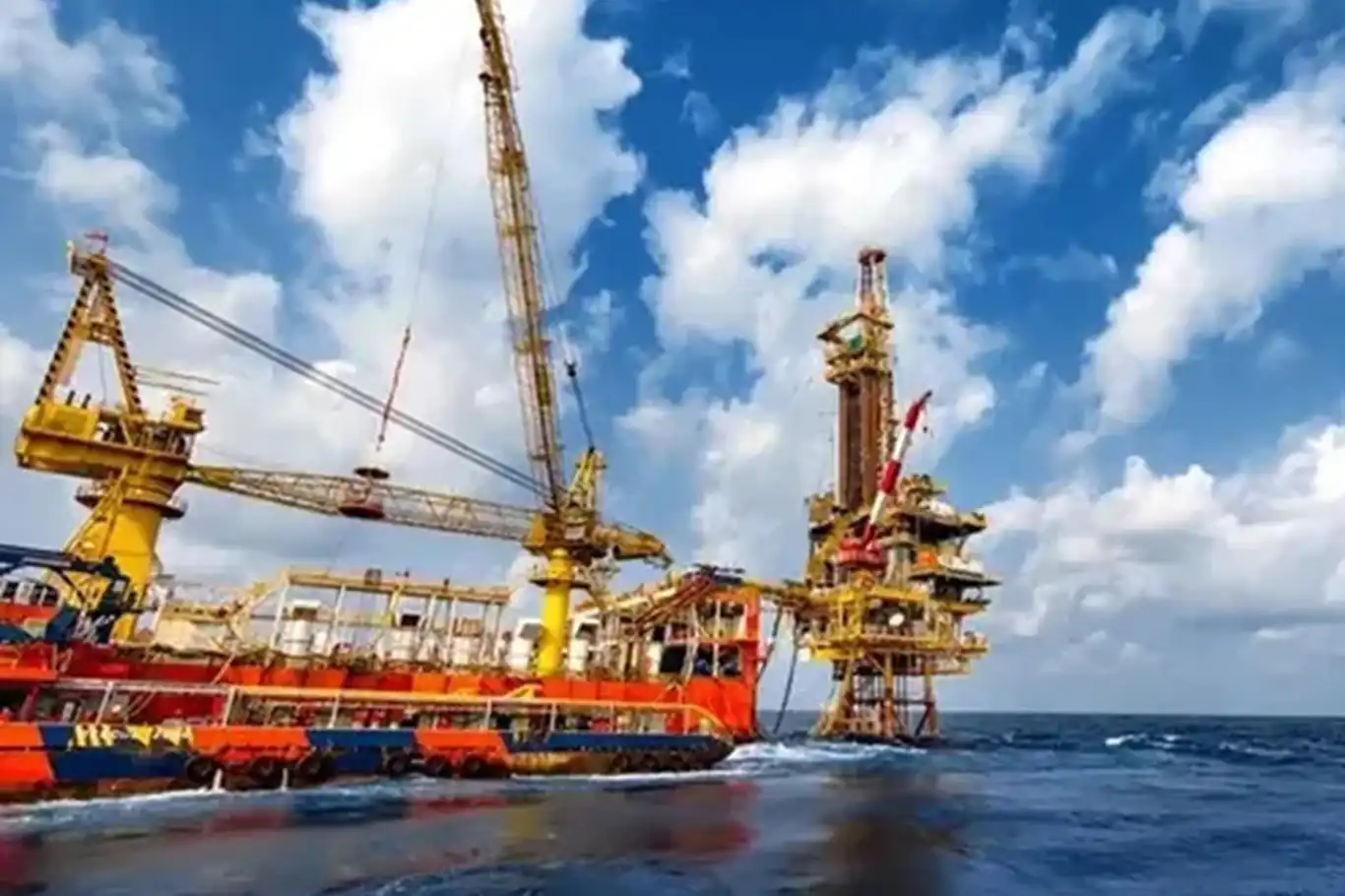Japan protests China’s new gas field development in disputed East China Sea


Japan has lodged a formal protest against China after detecting new gas field development activities in disputed waters of the East China Sea, escalating tensions in a maritime zone that has long been a flashpoint between the two Asian powers.
The Japanese Ministry of Foreign Affairs announced late Monday that surveillance confirmed the construction of a new Chinese offshore structure west of the “median line” — the boundary Tokyo claims should provisionally divide the two nations’ Exclusive Economic Zones (EEZs).
In a strongly worded statement, the ministry said: “It is extremely regrettable that China is advancing unilateral development in the East China Sea, given that maritime boundaries and rights remain unresolved.”
Kanai Masaaki, director-general of the Asian and Oceanian Affairs Bureau, summoned Shi Yong, deputy chief of mission at the Chinese Embassy in Tokyo, to convey a “strong protest.” Masaaki pressed China to resume dialogue under a 2008 bilateral agreement aimed at joint resource exploitation.
That agreement — hailed at the time as a rare breakthrough — was meant to ease tensions by allowing both countries to cooperatively explore and share resources in contested areas. But progress stalled in 2010 after a Chinese fishing trawler collided with Japanese Coast Guard vessels near the Senkaku Islands, triggering a sharp diplomatic standoff.
Since then, Beijing has steadily expanded its offshore infrastructure, while Tokyo has repeatedly objected to what it sees as unilateral encroachment. Monday’s protest follows similar complaints filed in May and June, after Japan confirmed the construction of multiple Chinese installations.
While Beijing has not yet issued a response to the latest protest, its Ministry of Foreign Affairs has previously defended the activities, insisting they are conducted in “undisputed waters under China’s jurisdiction.”
China does not recognize Japan’s “median line” claim, instead asserting that its continental shelf — and therefore its EEZ — extends almost to the Okinawa Trough, much closer to Japan’s shores. The competing interpretations of maritime law leave large swathes of the East China Sea in dispute.
At the heart of the broader tensions are the Senkaku Islands, a small chain of uninhabited islets administered by Japan but claimed by China (which calls them the Diaoyu Islands) and Taiwan. The area surrounding the islands is believed to be rich in oil, natural gas, and fisheries resources, making it both economically and strategically valuable.
China has frequently sent coast guard and paramilitary vessels near the islands, while Japan has bolstered its defense presence in Okinawa and nearby waters. Each side accuses the other of escalating tensions.
The East China Sea dispute is not just a bilateral issue. It intersects with wider geopolitical dynamics, particularly Japan’s security alliance with the United States. Washington has repeatedly reaffirmed that the U.S.-Japan Security Treaty covers the Senkaku Islands, meaning it could be drawn into a confrontation if the dispute turns violent.
For Japan, China’s offshore developments represent not only a threat to its resource claims but also a test of its sovereignty and ability to deter Chinese assertiveness. For Beijing, expanding energy
exploration in contested waters reinforces its maritime presence and challenges Japan’s claims, while signaling defiance against what it perceives as U.S.-backed containment.
Diplomatic efforts remain fragile. Japan continues to call for China to return to the 2008 cooperative framework, but Beijing has shown little willingness to compromise, especially amid heightened nationalism and its broader push to secure energy resources.
Analysts warn that unless both sides find a path back to dialogue, the risk of miscalculation — whether through a naval clash, an airspace incident, or further energy competition — remains high.
For now, Japan’s protest underscores a worsening trend: the transformation of the East China Sea from a zone of potential cooperation into yet another arena of strategic rivalry in East Asia. (ILKHA)
LEGAL WARNING: All rights of the published news, photos and videos are reserved by İlke Haber Ajansı Basın Yayın San. Trade A.Ş. Under no circumstances can all or part of the news, photos and videos be used without a written contract or subscription.
At least 70 Palestinian civilians were killed since dawn Tuesday as Israel unleashed a fresh wave of bombing and shelling across the besieged Gaza Strip, according to local and medical sources.
Israeli authorities demolished seven homes in the Bedouin village of Al-Serr, located west of Shaqib al-Salam in the Negev Desert, in a continuation of a sweeping campaign of forced displacement targeting the region’s Palestinian-Bedouin communities.
Norway’s Norges Bank Investment Management (NBIM), the world’s largest sovereign wealth fund managing $2 trillion, has announced a historic divestment from five major Israeli banks and U.S.-based Caterpillar due to their complicity in Israel’s ongoing war crimes and human rights abuses against Palestinians.